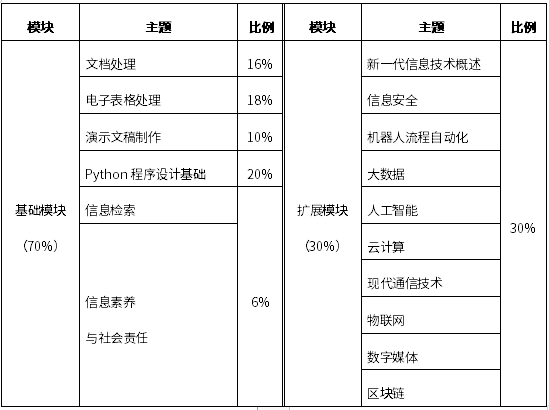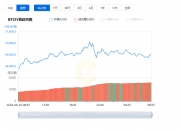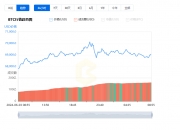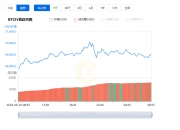2023年福建专升本信息技术基础考试大纲
普通高校专升本考试(以下简称“专升本考试”)是普通高校全日制高职应届毕业生升入普通高校全日制本科的选拔性考试,其目的是科学、公平、有效地测试考生在高职阶段相关专业知识、基本理论与方法的掌握水平和分析问题、解决问题的能力,以利于各普通本科院校择优选拔,确保招生质量。专升本考试贯彻党的教育方针,落实立德树人根本任务,促进高素质技术技能人才成长,培养德智体美劳全面发展的社会主义建设者和接班人。
The General Higher Education Institute examination (hereinafter referred to as the Special Promotion Examination) is an elective examination for admission to the General Higher Education Institute of full-time senior students. The purpose of the examination is to test scientificly, fairly and effectively the professional knowledge of candidates in higher education, the level of knowledge and analysis of basic theories and methods, and the ability to solve problems in order to ensure the quality of the enrolment of students on the basis of merit.
《信息技术基础》作为专升本考试理工类的专业基础课,其考试说明主要依据中华人民共和国教育部《高等职业教育专科信息技术课程标准(2021年版)》(以下简称“课程标准”)来确定,注重考查考生对所学相关的基础知识、基本技能和基本思想方法的掌握程度,考查考生的信息技术基本能力。
The Information Technology Foundation (ITB) as a professional basic course in the technical sciences of the special promotion examination is based mainly on the standards of the Ministry of Education of the People's Republic of China for specialized IT courses in higher vocational education (2021 edition) (hereinafter referred to as “the curriculum standards”) and focuses on the level of mastery of the basic knowledge, basic skills and basic intellectual methods associated with the examination, as well as on the basic IT skills of the candidates.
一、考核目标与要求
I. OBJECTIVES AND REQUIREMENTS
(一)知识要求
(i) Knowledge requirements
知识是指课程标准基础模块的文档处理、电子表格处理、演示文稿制作、信息检索、新一代信息技术概述、信息素养与社会责任的概念和方法,也包括课程标准扩展模块的信息安全、机器人流程自动化、程序设计基础、大数据、人工智能、云计算、现代通信技术、物联网、数字媒体、区块链的概念和特性,按照一定程序与步骤进行信息的获取、表示、传输、存储、加工、应用等基本技能。
Knowledge refers to document processing, spreadsheet processing, presentation production, information retrieval, a new generation of information technology profiles, concepts and methods of information literacy and social responsibility, as well as basic skills such as information security, robotic process automation, process design basis, big data, artificial intelligence, cloud computing, modern communications technology, physical networking, digital media, concept and characteristics of block chains, information acquisition, expression, transmission, storage, processing, application, etc., in accordance with certain procedures and steps.
由浅入深,对知识的要求依次是了解、熟悉、理解、掌握四个层次。
From a shallow depth, knowledge requires four levels of understanding, familiarity, understanding and mastery.
了解:初步知道知识的含义及其简单应用。
Understanding: Preliminary knowledge of what knowledge means and its simple application.
熟悉:对知识有系统性地认识,能够找到知识之间的联系, 把点状认识连成线,且可以运用相关知识解决部分实际问题,
Proficiency: Knowledge is systematically understood, links knowledge can be found, points are connected, and some practical problems can be solved with relevant knowledge.
理解:识记知识的概念和规律(定义、定理、法则等)以及其他相关的联系。
Understanding: Concepts and patterns of knowledge (definitions, doctrine, rules, etc.) and other related links.
掌握:能够应用知识的概念、定义、定理、法则去解决一些问题。
Knowledge: some issues can be solved by applying concepts, definitions, theories, rules of knowledge.
(二)技能与能力要求
(ii) Skills and competency requirements
技能与能力包含信息意识、计算思维、数字化创新与发展、信息社会责任四个方面。
Skills and competencies encompass information awareness, computing thinking, digital innovation and development, and information social responsibility.
信息意识:能了解信息及信息素养在现代社会中的作用与价值,主动地寻求恰当的方式捕获、提取和分析信息,以有效的方法和手段判断信息的可靠性、真实性、准确性和目的性,对信息可能产生的影响进行预期分析,自觉地充分利用信息解决生活、学习和工作中的实际问题,具有团队协作精神,善于与他人合作、共享信息,实现信息的更大价值。
Information awareness: to understand the role and value of information and its literacy in modern society, to proactively seek appropriate ways to capture, extract and analyse information, to judge its reliability, authenticity, accuracy and purpose in effective ways and means, to conduct the expected analysis of its potential impact, to consciously make full use of information to solve practical problems in life, learning and work, to work together in a spirit of teamwork, to work with others, to share information and to achieve greater value for information.
计算思维:能采用计算机等智能化工具可以处理的方式界定问题、抽象特征、建立模型、组织数据,能综合利用各种信息资源、科学方法和信息技术工具解决问题,能将这种解决问题的思维方式迁移运用到职业岗位与生活情境的相关问题解决过程中。
Computation thinking: capable of defining problems, abstract features, modelling, organizing data, using a combination of information resources, scientific methods and information technology tools, using intelligent tools such as computers to deal with, and able to shift this approach to solving problems related to job and life situations.
数字化创新与发展:能理解数字化学习环境的优势和局限,能从信息化角度分析问题的解决路径,并将信息技术与所学专业相融合,通过创新思维、具体实践使问题得以解决;能合理运用数字化资源与工具,养成数字化学习与实践创新的习惯,开展自主学习、协同工作、知识分享与创新创业实践,形成可持续发展能力。
Digital innovation and development: understand the advantages and limitations of a digital learning environment, analyse the path to solving problems from an informational perspective and integrate information technology with the specialties studied, so that problems can be solved through innovative thinking and concrete practices; and rationally use digital resources and tools to develop digital learning and practice innovations, self-learning, teamwork, knowledge-sharing and innovative entrepreneurship practices to develop sustainable development capabilities.
信息社会责任:在现实世界和虚拟空间中都能遵守相关法律法规,信守信息社会的道德与伦理准则;具备较强的信息安全意识与防护能力,能有效维护信息活动中个人、他人的合法权益和公共信息安全;关注信息技术创新所带来的社会问题,对信息技术创新所产生的新观念和新事物,能从社会发展、职业发展的视角进行理性的判断和负责的行动。
Information social responsibility: Both in the real world and in virtual space, it is possible to comply with the relevant laws and regulations and to adhere to the ethical and ethical norms of the information society; to have a strong information security awareness and protection capability that can effectively safeguard the legitimate rights and interests of individuals, others and the security of public information in information activities; to focus on the social aspects of information technology innovation, and to make rational judgements and responsible actions about new ideas and new things arising from information technology innovation from the perspective of social development and career development.
二、考试内容与要求
II. CONTENT AND REQUIREMENTS OF THE EXPERIENCE
考试内容分为基础模块和扩展模块,各模块分值比例如表1所示。其中,基础模块包括:文档处理、电子表格处理、演示文稿制作、Python程序设计基础、信息检索、信息素养与社会责任等六个部分;扩展模块包括:新一代信息技术概述、信息安全、机器人流程自动化、大数据、人工智能、云计算、现代通信技术、物联网、数字媒体、区块链等十个部分。
The examination content is divided into basic modules and extended modules, for example, as shown in table 1. The basic modules include six components: document processing, spreadsheet processing, presentation production, Python programming base, information retrieval, information literacy and social responsibility; and the expanded modules include ten components: a new generation of information technology overviews, information security, robotic process automation, big data, artificial intelligence, cloud computing, modern communications technology, object networking, digital media, block chains, etc.

(一)文档处理
(i) Document processing
包含文档的基本编辑、图片的插入和编辑、表格的插入和编辑、样式与模板的创建和使用、多人协同编辑文档等内容。
Includes the basic editing of documents, the insertion and editing of pictures, the insertion and editing of tables, the creation and use of styles and templates, and the co-editing of documents.
1. 掌握文档的基本操作,如打开、复制、保存等,熟悉自动保存文档、联机文档、保护文档、检查文档、将文档发布为 PDF格式、加密发布 PDF格式文档等操作;
1. To master the basic operation of documents, such as opening, copying, saving, etc., familiar with the operation of automatically saving documents, on-line documents, protecting documents, checking documents, publishing documents into PDF format, encryption publishing PDF format documents, etc.;
2. 掌握文本编辑、文本查找和替换、段落的格式设置等操作;
2. Have access to text editing, text search and replacement, formatting of paragraphs, etc.;
3. 掌握图片、图形、艺术字等对象的插入、编辑和美化等操作;
3. To master the insertion, editing and glorification of objects such as pictures, graphics, artistic characters, etc.;
4. 掌握在文档中插入和编辑表格、对表格进行美化、灵活应用公式对表格中数据进行处理等操作;
4. Mastering the insertion and editing of tables in documents, the glorification of tables and the flexible application of formulae for processing data in tables;
5. 熟悉分页符和分节符的插入,掌握页眉、页脚、页码的插入和编辑等操作;
5. Be familiar with the insertion of page break and break, and have control of header, footer, page number insertion and editing;
6. 掌握样式与模板的创建和使用,掌握目录的制作和编辑操作;
6. To master the creation and use of styles and templates and the production and editing of directories;
7. 熟悉文档不同视图和导航任务窗格的使用,掌握页面设置操作;
7. Be familiar with the use of different viewing and navigational task pane for documents, and have control over page settings;
8. 掌握打印预览和打印操作的相关设置;
8. Have the relevant settings for printing previews and printing operations;
9. 熟悉多人协同编辑文档的方法和技巧。
9. Acquainted with the methods and techniques of many people working together to edit documents.
(二)电子表格处理
(ii) Spreadsheet processing
包含工作表和工作簿操作、公式和函数的使用、图表分析展示数据、数据处理等内容。
Comprises sheet and workbook operations, the use of formulae and functions, chart analysis and presentation of data, data processing, etc.
1. 了解电子表格的应用场景,熟悉相关工具的功能和操作界面;
1. An understanding of the spreadsheet application and familiarity with the functionality and operational interface of the tool;
2. 掌握新建、保存、打开和关闭工作簿,切换、插入、删除、重命名、移动、复制、冻结、显示及隐藏工作表等操作;
2. Mastering the creation, saving, opening and closing of new worksheets, switching, inserting, deleting, renaming, moving, copying, freezing, displaying and hiding sheets;
3. 掌握单元格、行和列的相关操作,掌握使用控制句柄、设置数据有效性和设置单元格格式的方法;
3. The relevant operation of cells, rows and columns, the method of using the control handle, the validity of the data and the formatting of the cells;
4. 掌握数据录入的技巧,如快速输入特殊数据、使用自定义序列填充单元格、快速填充和导入数据,掌握格式刷、边框、对齐等常用格式设置;
4. Have access to techniques for data entry, such as fast-entry special data, filling cells with custom sequences, fast-filling and importing data, and to the usual formatting settings such as formatting, bordering, alignment, etc.;
5. 熟悉工作簿的保护、撤销保护和共享,工作表的保护、撤销保护,工作表的背景、样式、主题设定;
5. Knowledge of the protection of the workbook, withdrawal of protection and sharing, protection of worksheets, withdrawal of protection, background of worksheets, styles, subject setting;
6. 理解单元格绝对地址、相对地址的概念和区别,掌握相对引用、绝对引用、混合引用及工作表外单元格的引用方法;
To understand the absolute address of the cell, the concept of relative address and the difference, and to have the method of reference for relative references, absolute references, mixed references and cells outside the sheet;
7. 熟悉公式和函数的使用,掌握平均值、最大/最小值、求和、计数、条件等常见函数的使用;
7. Be familiar with the use of formulae and functions and have knowledge of the use of common functions such as averages, max/minimum values, summation, counting, condition;
8. 了解常见的图表类型及电子表格处理工具提供的图表类型,掌握利用表格数据制作常用图表的方法;
8. Understanding common chart types and the type of chart provided by spreadsheet processing tools, and mastering the methods of using table data for the production of common graphs;
9. 掌握自动筛选、自定义筛选、高级筛选、排序和分类汇总等操作;
9. Possession of automatic screening, custom screening, advanced screening, sorting and classification aggregation;
10. 理解数据透视表的概念,掌握数据透视表的创建、更新数据、添加和删除字段、查看明细数据等操作,能利用数据透视表创建数据透视图;
10. Understanding the concept of the data lens table, mastering the creation, updating, adding and deleting fields and viewing the details of the data view table, etc., and enabling the creation of data lenses using the data lens table;
11. 掌握页面布局、打印预览和打印操作的相关设置。
11. Relevant settings for page layout, print preview and printing operations.
(三)演示文稿制作
(iii) Presentation production
包含演示文稿制作、动画设计、母版制作和使用、演示文稿放映和导出等内容。
Includes presentations production, animation design, master production and use, presentation screening and export.
1. 了解演示文稿的应用场景,熟悉相关工具的功能、操作界面和制作流程;
1. An understanding of the presentation's application landscape and familiarity with the functions, operating interfaces and production processes of the tool;
2. 掌握演示文稿的创建、打开、保存、退出等基本操作;
2. Have access to the basic operations of creating, opening, saving, withdrawing, etc. of the presentation;
3. 熟悉演示文稿不同视图方式的应用;
3. An application that is familiar with the different views of the presentation;
4. 掌握幻灯片的创建、复制、删除、移动等基本操作;
4. To master the basic operations of creating, copying, deleting, moving, etc. slides;
5. 理解幻灯片的设计及布局原则;
5. Understanding the design and layout principles of slides;
6. 掌握在幻灯片中插入各类对象的方法,如文本框、图形、图片、表格、音频、视频等对象;
6. Know how to insert various objects in slides, such as text frames, graphics, pictures, tables, audio, video, etc.;
7. 理解幻灯片母版的概念,掌握幻灯片母版、备注母版的编辑及应用方法;
7. Understanding the master slide concept and mastering the master slide, note master editing and application methods;
8. 掌握幻灯片切换动画、对象动画的设置方法及超链接、动作按钮的应用方法;
8. The method of setting up slides to switch animations, object animations and the application of hyperlinks and motion buttons;
9. 了解幻灯片的放映类型,会使用排练计时进行放映;
9. Understanding the type of slide show will be shown using a rehearsal schedule;
10. 了解幻灯片不同格式的导出方法。
10. Understanding the export methods of different presentation formats.
(四)Python程序设计基础
(iv) Python program design basis
包含Python程序设计基础知识、Python程序设计语言和工具、Python程序设计方法和实践等内容。
Comprises basic knowledge of Python program design, Python program design language and tools, Python program design methods and practices.
1. 理解程序设计的基本概念;
1. Understanding the basic concepts of programme design;
2. 了解程序设计的发展历程和未来趋势;
2. Understanding the evolution of programme design and future trends;
3. 掌握典型程序设计的基本思路与流程;
3. Mastering basic thinking and processes for typical program design;
4. 了解Python程序设计语言的特点和适用场景;
4. Understanding the characteristics and application of the Python programming language;
5. 掌握Python编程工具的安装、环境配置和基本使用方法;
5. Obtaining the installation, environmental configuration and basic use of Python programming tools;
6. 掌握Python程序设计语言的基本语法、流程控制、数据类型、函数、模块、文件操作、异常处理等;
6. Basic syntax, process control, data type, functions, modules, file operations, abnormal processing, etc., with knowledge of the Python programming language;
7. 掌握Python程序的编写和调试方法。
7. Obtaining the methodology for the preparation and debugging of the Python process.
(五)信息检索
(v) Information retrieval
包含信息检索基础知识、搜索引擎使用技巧、专用平台信息检索等内容。
Includes basic information retrieval knowledge, search engine use skills, dedicated platform information retrieval, etc.
1. 理解信息检索的基本概念,了解信息检索的基本流程;
1. Understanding the basic concepts of information retrieval and the basic processes of information retrieval;
2. 掌握常用搜索引擎的自定义搜索方法,掌握布尔逻辑检索、截词检索、位置检索、限制检索等检索方法;
2. Have access to custom search methods for common search engines and to search methods such as Boolean Logic Retrieval, Crossword Retrieval, Location Retrieval, Restricted Search;
3. 掌握通过网页、社交媒体等不同信息平台进行信息检索的方法;
3. Access to information through different information platforms such as web pages, social media, etc.;
4. 掌握通过期刊、论文、专利等专用平台(中国知网、国家知识产权局专利检索及分析平台)进行信息检索的方法。
4. Have access to information through specialized platforms such as periodicals, dissertations, patents, etc. (China Information Network, National Intellectual Property Office Patent Retrieval and Analysis Platform).
(六)信息素养与社会责任
(vi) Information literacy and social responsibility
包含信息素养、信息技术发展史、信息伦理与职业行为自律等内容。
It includes elements such as information literacy, history of information technology development, information ethics and self-regulation of professional behaviour.
1. 了解信息素养的基本概念及主要要素;
1. Understanding the basic concepts and main elements of information literacy;
2. 了解信息技术发展史及知名企业的兴衰变化过程,树立正确的职业理念;
2. To understand the history of information technology development and the evolution of well-known enterprises and to develop sound professional concepts;
3. 了解信息安全及自主可控的要求;
3. Understanding information security and autonomous control requirements;
4. 了解信息伦理知识,了解相关法律法规与职业行为自律的要求;
4. Knowledge of information ethics and the requirements for self-regulation of relevant laws and regulations and professional conduct;
5. 了解个人在不同行业内发展的共性途径和工作方法。
5. Understanding common approaches and working methods developed by individuals in different industries.
(七)新一代信息技术概述
(vii) Overview of the new generation of information technology
包含新一代信息技术的基本概念、技术特点、典型应用、技术融合等内容。
It includes the basic concepts of a new generation of information technologies, technical characteristics, typical applications, technology integration, etc.
1. 理解新一代信息技术及其主要代表技术的基本概念;
1. Understanding the new generation of information technologies and their underlying concepts, which primarily represent technology;
2. 了解新一代信息技术各主要代表技术的技术特点;
2. Understanding the technological characteristics of the new generation of information technologies that represent technology;
3. 了解新一代信息技术各主要代表技术的典型应用;
3. Understanding the typical applications of the new generation of information technologies that represent technology;
4. 了解新一代信息技术与制造业等产业的融合发展方式。
4. Understanding the new generation of integrated development approaches in industries such as information technology and manufacturing.
(八)信息安全
(viii) Information security
包含信息安全意识、信息安全技术、信息安全应用等内容。
It includes information security awareness, information security technologies, information security applications, etc.
1. 建立信息安全意识,能识别常见的网络欺诈行为;
1. Creation of an information security awareness capable of identifying common cyberfrauds;
2. 了解信息安全的基本概念,包括信息安全基本要素、网络安全等级保护等内容;
2. Understanding the basic concepts of information security, including the basic elements of information security, cybersecurity level protection, etc.;
3. 了解信息安全相关技术,了解信息安全面临的常见威胁和常用的安全防御技术;
3. Understanding relevant information security-related technologies, common threats to information security and commonly used security defence technologies;
4. 了解常用网络安全设备的功能和部署方式;
4. Understanding the functionality and mode of deployment of commonly used network security equipment;
5. 了解网络信息安全保障的一般思路;
5. Understanding the general idea of web-based information security;
6. 掌握利用系统安全中心配置防火墙的方法;
6. Capturing the use of the System Security Centre to configure firewalls;
7. 熟悉利用系统安全中心配置病毒防护的方法;
7. Acquainted with the use of system safety centres to provide protection against viruses;
8. 熟悉常用第三方信息安全工具的使用方法,并能解决常见的安全问题。
8. Be familiar with the common use of third-party information security tools and be able to solve common security problems.
(九)机器人流程自动化
(ix) Automation of robotic processes
包含机器人流程自动化基础知识、技术框架和功能、工具应用、软件机器人的创建和实施等内容。
It includes basic knowledge of robotic process automation, technical framework and functionality, tool applications, and the creation and implementation of software robots.
1. 理解机器人流程自动化的基本概念,了解机器人流程自动化的发展历程和主流工具;
1. Understanding the basic concepts of automating robotic processes and understanding the development history and mainstream tools of automating robotic processes;
2. 了解机器人流程自动化的技术框架、功能及部署模式等;
2. Understanding the technical framework, functions and deployment patterns of robotic process automation;
3. 熟悉机器人流程自动化工具的使用过程。
3. Familiarity with the use of robotic process automation tools.
(十)大数据
(x) Big data
包含大数据基础知识、大数据系统架构、大数据分析算法、大数据应用及发展趋势等内容。
It includes the knowledge base of big data, the architecture of big data systems, big data analysis algorithms, big data applications and trends in development.
1. 理解大数据的基本概念、结构类型和核心特征;
1. Understanding the basic concepts, structural types and core characteristics of big data;
2. 了解大数据的时代背景、应用场景和发展趋势;
2. Understanding the age context, application scenes and trends of large data;
3. 了解大数据系统架构,理解大数据在获取、存储和管理方面的技术架构;
3. Understanding the architecture of big data systems and the technical architecture of large data acquisition, storage and management;
4. 了解大数据工具与传统数据库工具在应用场景上的区别,掌握简单大数据环境的搭建方法。
4. Understanding the differences in the application landscape between big data tools and traditional database tools, and mastering the mix of simple big data environments.
(十一)人工智能
(xi) Artificial intelligence
包含人工智能基础知识、人工智能核心技术、人工智能技术应用等内容。
It includes basic knowledge of artificial intelligence, core technologies of artificial intelligence, applications of artificial intelligence technology, etc.
1. 了解人工智能的定义、基本特征和社会价值;
1. Understanding the definition, basic characteristics and social values of artificial intelligence;
2. 了解人工智能的发展历程,及其在互联网及各传统行业中的典型应用和发展趋势;
2. Understanding the evolution of artificial intelligence and its typical applications and trends on the Internet and in traditional industries;
3. 熟悉人工智能技术应用的常用开发平台、框架和工具,了解其特点和适用范围;
3. To familiarize themselves with the common development platforms, frameworks and tools used for the application of artificial intelligence technology and to understand its characteristics and scope of application;
4. 熟悉人工智能技术应用的基本流程和步骤;
4. Basic processes and steps of familiarization with the application of artificial intelligence technology;
5. 了解人工智能涉及的核心技术及部分算法,能使用人工智能相关应用解决实际问题。
5. Understanding the core technologies and partial algorithms involved in artificial intelligence makes it possible to solve practical problems using AI-related applications.
(十二)云计算
(xii) Cloud computing
包含云计算基础知识和模式、技术原理和架构、主流产品和应用等内容。
It includes basic knowledge and models of cloud computing, technical rationale and architecture, mainstream products and applications.
1. 了解云计算的基本概念,了解云计算的主要应用行业和典型场景;
1. Understanding the basic concepts of cloud computing and the main applications and typical scenarios of cloud computing;
2. 了解云计算的服务交付模式,包括基础设施即服务、平台即服务和软件即服务等;
2. Understanding the mode of service delivery for cloud computing, including infrastructure, i.e. services, platforms, and software, i.e. services;
3. 熟悉云计算的部署模式,包括公有云、私有云、混合云等。
3. Be familiar with the deployment patterns of cloud computing, including public clouds, private clouds, mixed clouds, etc.
(十三)现代通信技术
(xiii) Modern communications technology
包含现代通信技术基础、5G技术、其他现代通信技术等内容。
It includes elements such as the modern communications technology base, 5G technology, and other modern communications technology.
1. 理解通信技术、现代通信技术、移动通信技术、5G技术等概念,掌握相关的基础知识;
1. Understanding the concepts of communications technology, modern communications technology, mobile communications technology, 5G technology, etc., and acquiring the relevant basic knowledge;
2. 了解现代通信技术的发展历程及未来趋势;
2. Understanding the evolution of modern communication technologies and future trends;
3. 了解移动通信技术中的传输技术、组网技术等;
3. Knowledge of transmission technology in mobile communication technologies, cluster network technology, etc.;
4. 了解5G的应用场景、基本特点和关键技术;
4. Understanding of 5G applications, basic features and key technologies;
5. 了解蓝牙、Wi-Fi、ZigBee、射频识别、卫星通信、光纤通信等现代通信技术的特点和应用场景;
5. Understanding the features and applications of modern communication technologies such as Bluetooth, Wi-Fi, ZigBee, radio frequency recognition, satellite communications, fibre-optic communications;
6. 了解现代通信技术与其他信息技术的融合发展。
6. Understanding the development of the integration of modern communication technologies with other information technologies.
(十四)物联网
(xiv) Material networking
包含物联网基础知识、物联网体系结构和关键技术、物联网系统应用等内容。
It includes basic knowledge of the network, structure of the network system and key technologies, and application of the network system.
1. 了解物联网的概念、应用领域和发展趋势;
1. Understanding the concept, application areas and trends of the network;
2. 了解物联网和其他技术的融合,如物联网与5G技术、物联网与人工智能技术等;
2. Understanding the integration of physical networking and other technologies, such as physical networking and 5G technology, physical networking and artificial intelligence technology;
3. 熟悉物联网感知层、网络层和应用层的三层体系结构,了解每层在物联网中的作用;
3. To be familiar with the three-layer structure of the sensor, network and application layers and to understand the role of each layer in object networking;
4. 熟悉物联网感知层关键技术,包括传感器、自动识别、智能设备等;
4. Be familiar with key techniques of the networked sensor layer, including sensors, automatic recognition, smart equipment, etc.;
5. 熟悉物联网网络层关键技术,包括无线通信网络、互联网、卫星通信网等;
5. Knowledge of key technologies at the network level, including wireless communication networks, the Internet, satellite communications networks, etc.;
6. 熟悉物联网应用层关键技术,包括云计算、中间件、应用系统等。
6. Be familiar with key technologies of the networked application layer, including cloud computing, intermediates, application systems, etc.
(十五)数字媒体
(xv) Digital media
包含数字媒体基础知识、数字文本、数字图像、数字声音、数字视频、HTML5应用制作和发布等内容。
Includes basic knowledge of digital media, digital text, digital images, digital sound, digital video, HTML5 application production and distribution.
1. 理解数字媒体和数字媒体技术的概念;
1. Understanding the concepts of digital media and digital media technology;
2. 了解数字媒体技术的发展趋势;
2. Understanding trends in digital media technology;
3. 了解数字文本处理的技术过程,了解文本准备、文本编辑、文本处理、文本存储和传输、文本展现等操作;
3. Understanding the technical process of digital text processing and the operation of text preparation, text editing, text processing, text storage and transmission, text presentation, etc.;
4. 了解数字图像处理的技术过程,了解对数字图像进行去噪、增强、复制、分割、提取特征、压缩、存储、检索等操作;
4. To understand the technical processes of digital image processing and the operation of digital images for noise removal, enhancement, reproduction, partitioning, extraction of features, compression, storage, retrieval, etc.;
5. 了解数字声音的特点,熟悉处理、存储和传输声音的数字化过程,了解通过移动端应用程序进行声音录制、剪辑与发布等操作;
5. To understand the characteristics of digital sound, to be familiar with the digitization process of processing, storing and transmitting sound and to understand the operation of sound recording, editing and publishing through mobile end applications;
6. 了解数字视频的特点,熟悉数字视频处理的技术过程,了解通过移动端应用程序进行视频制作、剪辑与发布等操作;
6. An understanding of the characteristics of digital video, familiarization with the technical processes of digital video processing and understanding of the operation of video production, editing and distribution through mobile end applications;
7. 了解HTML5应用的新特性,掌握HTML5应用的制作和发布;
7. Understanding the new features of HTML5 applications and mastering the production and dissemination of HTML5 applications;
8. 了解虚拟现实技术的基本概念、发展历程、应用场景和未来趋势。
8. Understanding the basic concepts of virtual reality technology, the course of development, the application landscape and future trends.
(十六)区块链
(xvi) Block chain
包含区块链基础知识、区块链应用领域、区块链核心技术等内容。
It includes basic knowledge of the block chain, area of application of the block chain, core technology of the block chain, etc.
1. 了解区块链的概念、发展历史、技术基础、特性等;
1. Understanding the concept, development history, technical foundation, characteristics, etc. of the block chain;
2. 了解区块链的分类,包括公有链、联盟链、私有链;
2. Understanding the classification of block chains, including public chains, chains of alliances, private chains;
3. 了解区块链技术在金融、供应链、公共服务、数字版权等领域的应用;
3. Understanding the application of block chain technology in areas such as finance, supply chains, public services, digital copyright;
4. 了解区块链技术的价值和未来发展趋势;
4. Understanding the value of block chain technology and future trends;
5. 了解比特币等典型区块链项目的机制和特点;
5. Understanding the mechanisms and characteristics of typical block chain projects such as Bitcoin;
6. 了解分布式账本、非对称加密算法、智能合约、共识机制的技术原理。
6. Understanding the technical principles of distributed books, asymmetric encryption algorithms, smart contracts, consensus mechanisms.
三、考试形式与参考题型
III. FORM OF THE EXPERIENCE AND THE METHODOLOGICAL METHODOLOGY
(一)考试形式
(i) Form of examination
考试采用闭卷、笔试形式。考试时间为150分钟,全卷满分300分。考试不使用计算器。
Examinations take the form of closed papers and written examinations.
(二)参考题型
(ii) Reference style
考试题型包括单选题、多选题、判断题、填空题、编程题、操作题、综合题等,也可以采用其它符合学科性质和考试要求的题型。
Examination styles include single, multi-choice, judgement, blank, programming, operation, synthesis, etc., as well as other topics that meet the nature of the discipline and the requirements of the examination.
四、参考书目
IV. Bibliography
含有上述考试内容的《信息技术基础》《全国计算机等级考试二级教程——Python语言程序设计》等相关参考书目。
Relevant bibliographies, such as “Information Technology Base”, “Second Curriculum for National Computer Level Examinations — Design of Python Language Programs”, containing the above-mentioned examinations.
五、其它说明
V. OTHER STATEMENTS
考试所涉及到的软件如下:
The software involved in the examination was as follows:
操作系统:Microsoft Windows 10或以上。
Operating systems: Microsoft Windows 10 or more.
办公软件:WPS Office 2019或以上。
Office software: WPS Office 2019 or more.
程序设计语言:Python 3.8或以上。
Program design language: Python 3.8 or more.
注册有任何问题请添加 微信:MVIP619 拉你进入群

打开微信扫一扫
添加客服
进入交流群





















发表评论